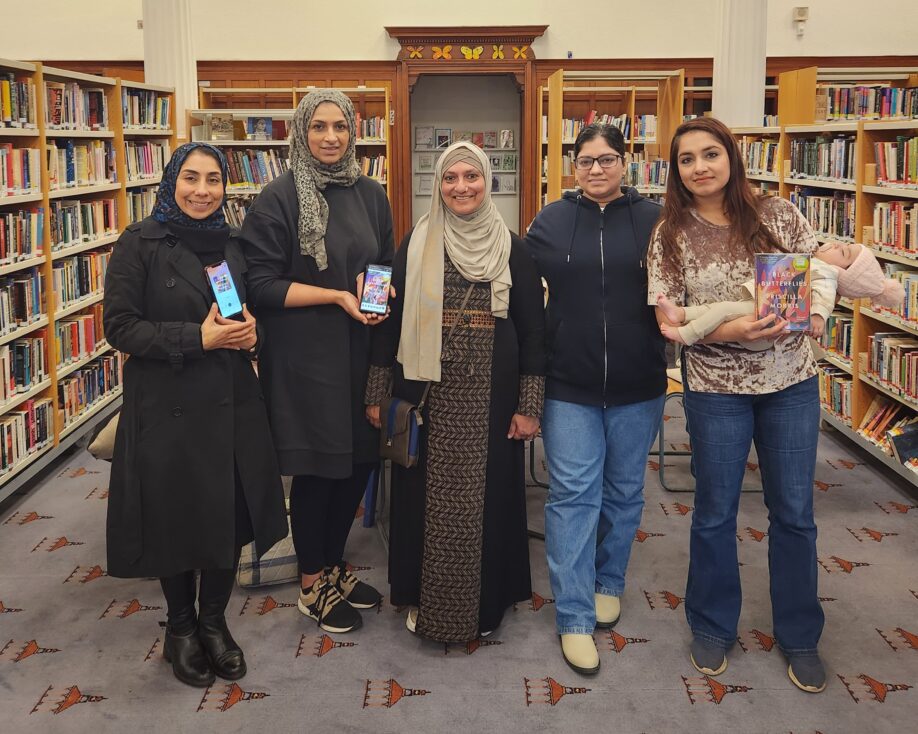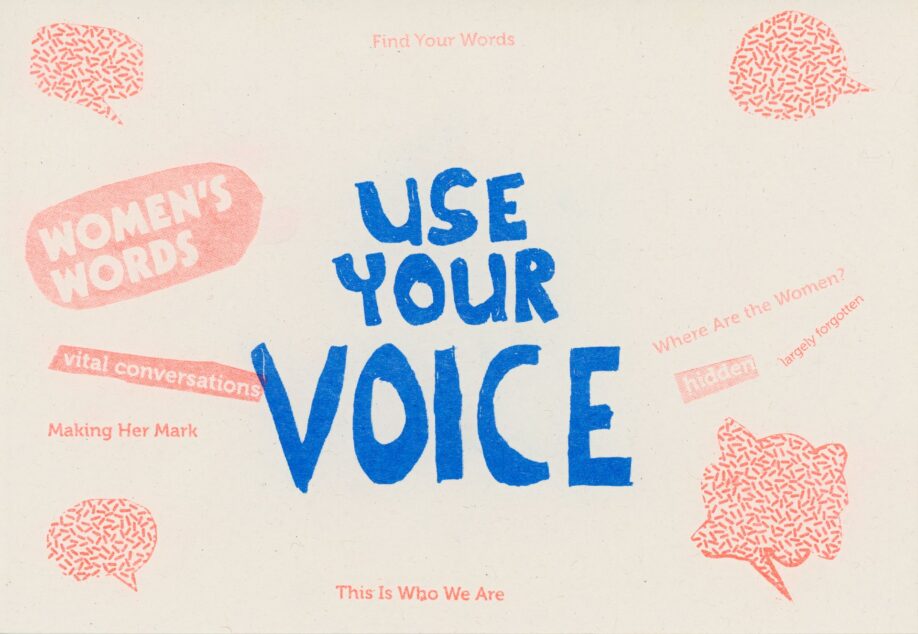When we read out loud, our voices take up a moment in time and space.
Who is doing the reading, who is doing the listening, where and when the reading is taking place – all these factors push up against recorded histories of who can be heard and where.
As a group of women of colour and non-binary people of colour who gather to read works by authors of the same background, Readers of Colour set out to discover what might happen when we gather to read aloud in a location that is framed or perceived as far far away from our own lives and histories. So, following an invitation from Historic Environment Scotland, we traveled to Stirling to find out what transformations might occur if we “read the castle”.
To bring this together, Lil Green and I overlaid pieces written by women of colour and non-binary people of colour about castles onto the many spaces of the site. A historic point of view was provided by Kirsten Wood, part of the Stirling Castle Learning Team.
Through these contexts, we explored what it means to read aloud, to reflect, and to reclaim space as people of colour in a historic site such as this. Amidst the castle’s stone walls, we delved into themes of ownership, occupation and the act of holding space, as well as narratives of fiction and fantasy often associated with castles.
Our day began at the Douglas Gardens and Learning Centre. The educational materials and objects held in this low-ceilinged, former barracks was transformed from a traditional classroom setting to a warmly lit and inviting space with flowers, fruit and potluck dishes brought by the readers. Over cups of tea and coffee, we engaged in conversation that led to a reflective exercise on our previous associations with castles. With this conversation shaping our journey for the rest of the day, I invite you to reflect,
What is one word that comes to mind when you think of castles?
The Grand Battery, the first space we visited, previously serving as the front line in the castle’s final battle, was transformed into a space of empowerment and dialogue through the reading of Maya Angelou’s The Mask. This space was chosen to read the powerful poem, remembering the author’s own visit to Stirling Castle and readings at Dundonald Castle. In this way, we reclaimed our agency through the act of engaging with literature, a reaffirmation of our right to be there, to be seen and to be heard.
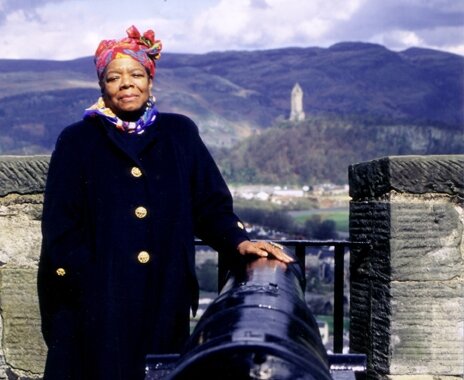
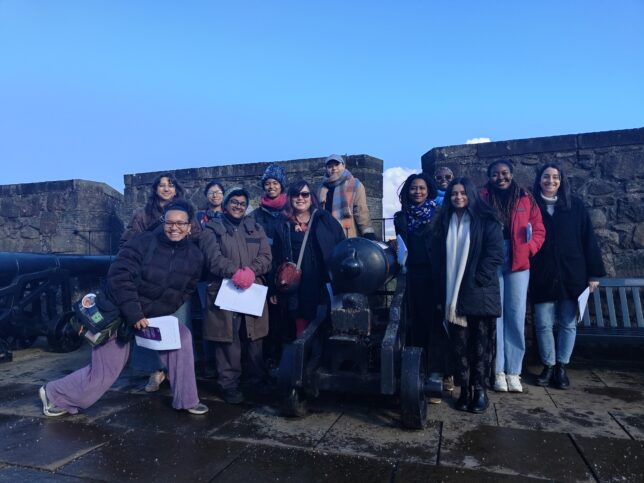
Content warning: this section has references to the transatlantic slave trade and imprisonment of people.
Inextricably woven in the narrative of castles, is the imprisonment and enslavement of people of colour that lived and worked there. Engaging with an extract from Homegoing by Yaa Gyasi at the Queen Anne Gardens, we unravelled the layers of traumatic history that can be entangled with castles. We talked of these narratives alongside resilient and joyful ones, documenting the rich and complex stories we have to share. Adding to these changed narratives, one of the readers, Teresa Abonambugre, talked of the Cape Coast Castle in Ghana. Previously, ‘The Door of No Return’, where millions of enslaved people were once sent to the United States, the gateway was renamed the ‘Door of Return’ and artists and writers from across the African diaspora have been invited to visit the castle.
Reading Rest is Resistance by Tricia Hersey in the same space, we added to this conversation, touching on the feminine form of fort, ‘fortress’, its connection to security and castles as spaces of community and care, thinking of those who lived and worked in the castle, perhaps tending to the gardens and preparing meals.
We reflected on the question,
Imagine a castle or fortress without a king or queen, prisoners or soldiers. Who could live there instead and how could they occupy the space?
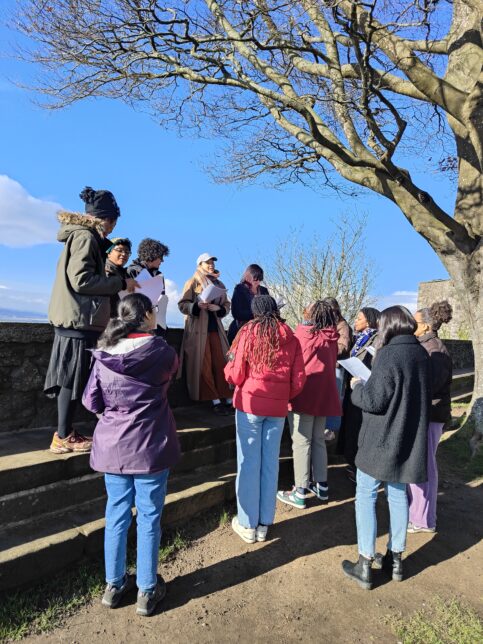
we created our own versions of castles –
otherwise inanimate objects, intentionally carving out spaces for ourselves in its history.
We explored the last space on our list – The Palace Apartments, through the reading of Lonely Castle in the Mirror by Mizuki Tsujimura. We reflected on the idea of castles as places of fiction and fantasy, historically removed from us. We took these conversations further by subverting the idea that castles are only places of Western fantasy for people of colour.
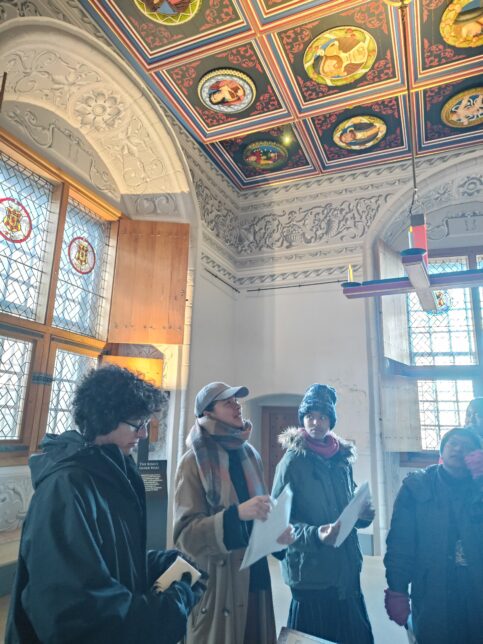
Our explorations were followed by a potluck lunch, where we celebrated the castle as a renewed space of connection and community. Amidst the scent of homemade dishes (from jollof – to dhokla – to onigiri!), we found solace in each other’s company and care much like those people in the castle hundreds of years ago, we imagined.
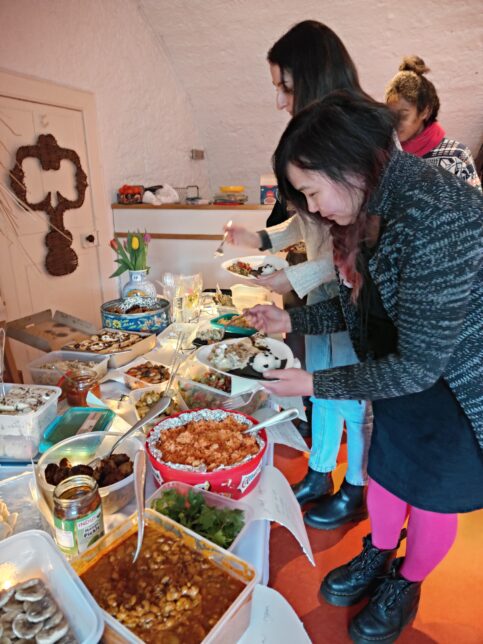
The rest of the afternoon was given to ourselves to explore some of the other spaces within the castle guided by literature. As an Indian woman, I was struck by the mention of the Queen Chennabhaira Devi or the ‘Pepper Queen’, hailing from my own state back home. Accompanied by a text discussing her rule defending the state of Karnataka against the Portuguese as well as internal invasions in the 16th century, some of my fellow readers and I gathered at the French Spur at the Castle. Previously used as an artillery spur, we reflected,
Temples, forts and battlements, what would you build or add on to the castle and why?
From music rooms to community spaces for women in the castle, we drew from our own experiences of the day to envision spaces where we, as women and non-binary people of colour hold space, through the simple, yet powerful act of reading literature and listening to each other in this historic building.
From the Douglas Gardens to the Palace Apartments, amidst conversation and food, we had made the castle into a sanctuary of belonging for us, echoing with the footsteps of those who came before and ours who carve the path forward.
The day ended with the same reflective exercise that asked the question,
What is a new word you associate with castles?
Our transformation from reading the castle is captured in this group poem,
From compound, to potluck,
From stones, to views [open and close your arms] that open new doors and interpretations,
From rocks, to a solid foundation, a space to occupy and reclaim
From the overlord, to liberation,
From hierarchy, to [a string of stick figures] – it’s people who interpret and give meaning to castles,
From old, to the layers of stories and histories in one castle,
From turret, to collective effort,
From fortress, to the unknown: gaps in history and potential for the future,
From hold, holding power, to segmentation, teasing out the layers of history,
From battlements, to taking up space,
From community, to a stronger community, acquiring knowledge collectively as a group and adding to history,
From power, to utopia,
From society, to realising the power that I have, that we have.
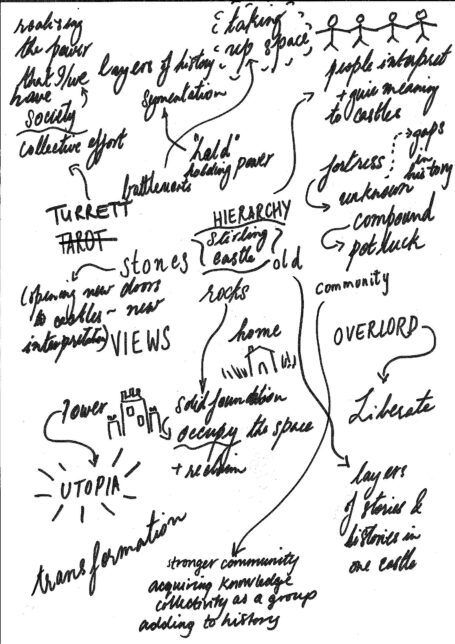
And the readers,
For me, reading together at the castle… opened my mind to the possibility of
how reading aloud in public spaces can transform how we
engage with/think/feel about them.
For me, reading together at the castle….. was in some respects liberating,
as our voices felt like it echoed far, first escaping its bodied confines
and reverberating through the historic stones of the castle, then as sonic volant
in the scottish landscape, then it flashed in the eye of the falcon of time,
and landed in the atmosphere of a future kin.
For me, reading together at the castle opened up history,
the landscape and the ways I understand myself in this country.
I never thought of visiting a castle before, and now I would do it,
and do it in my own way
Breanne Coelho and Lil Green

